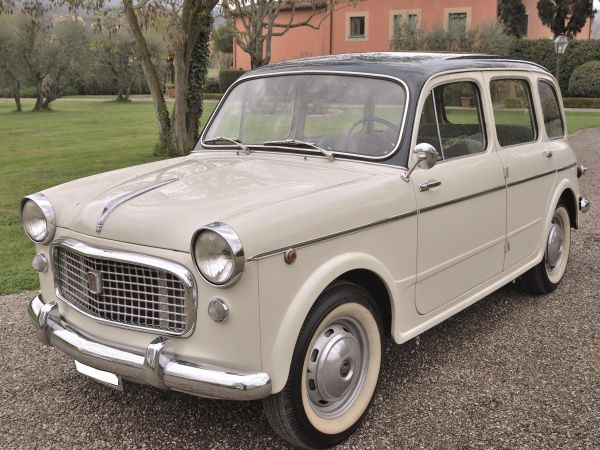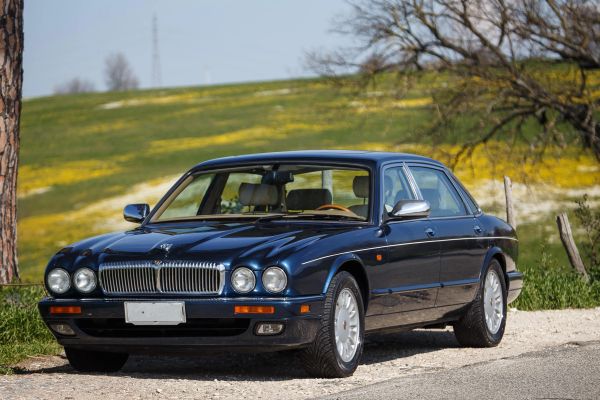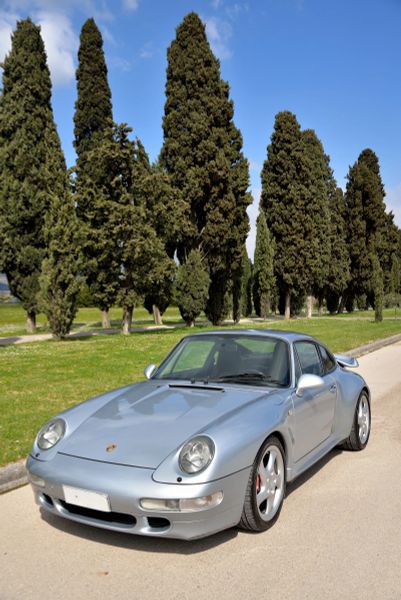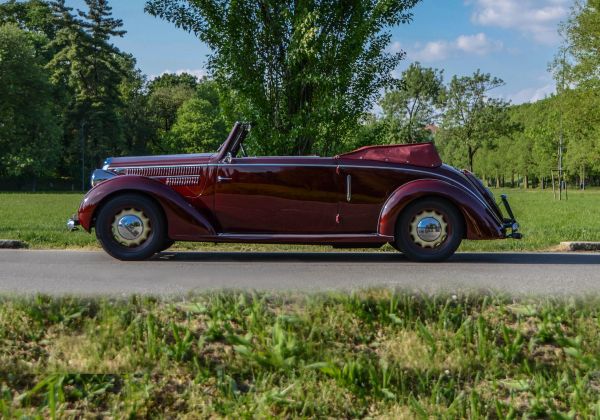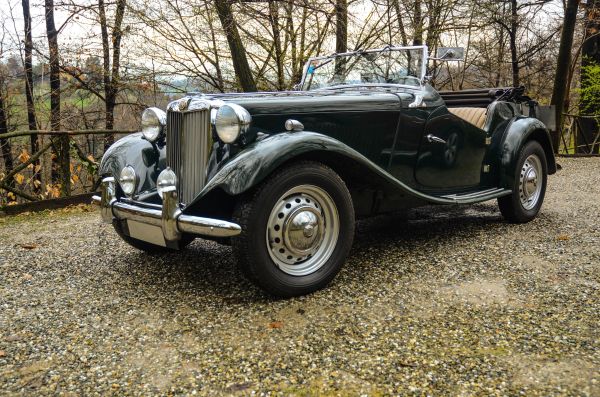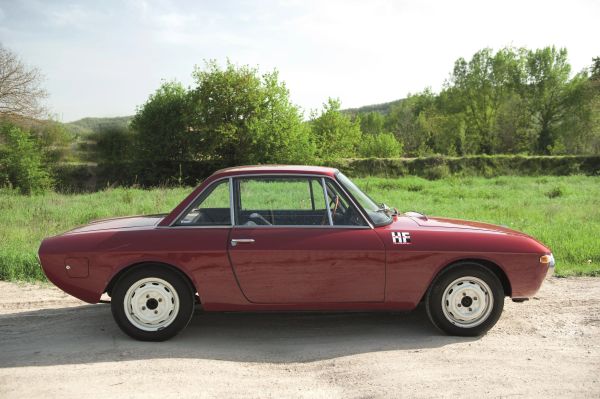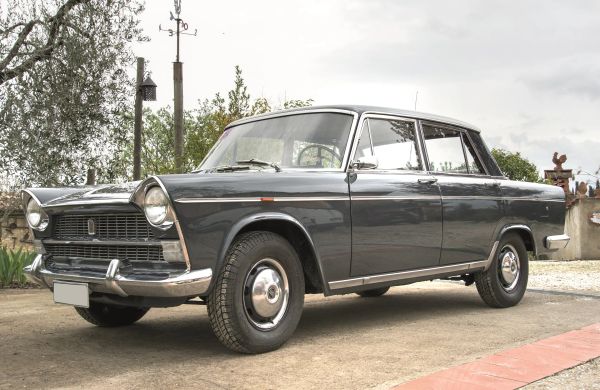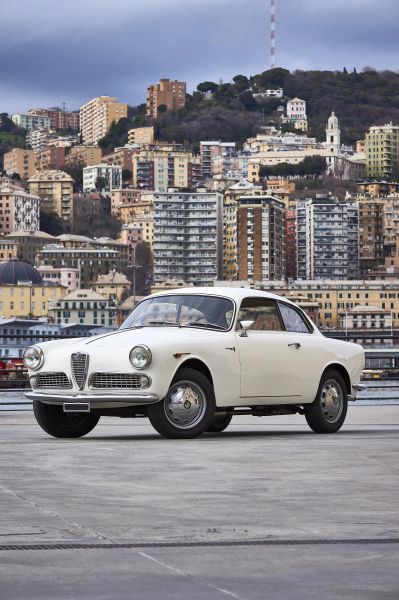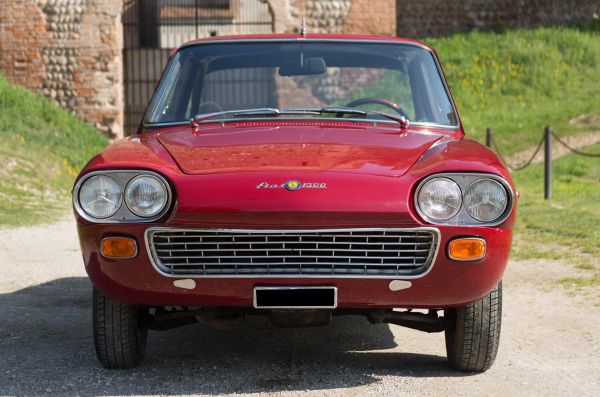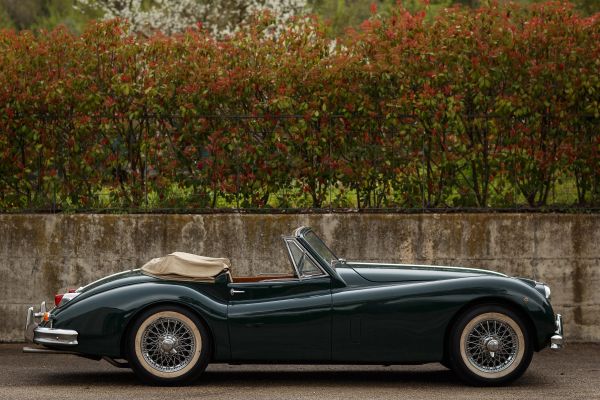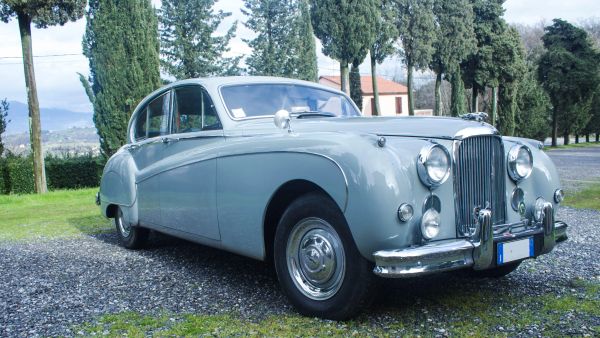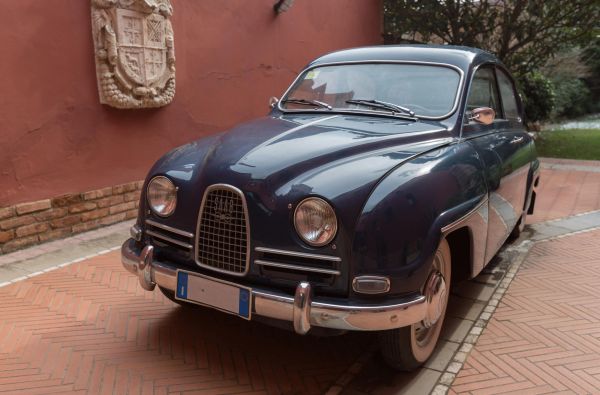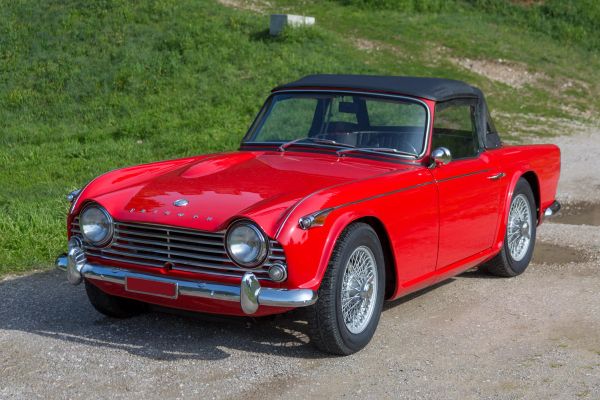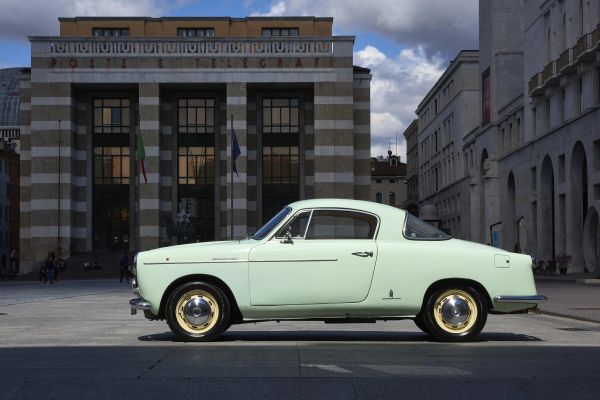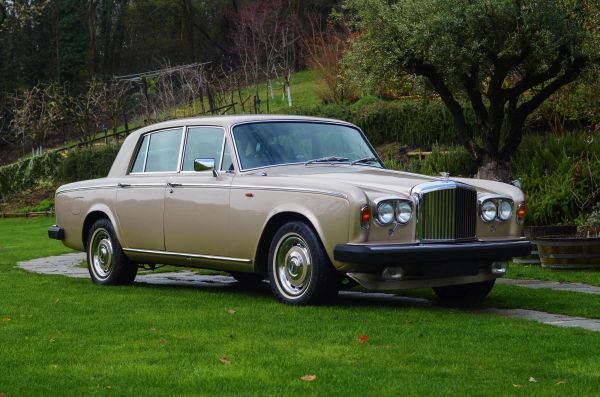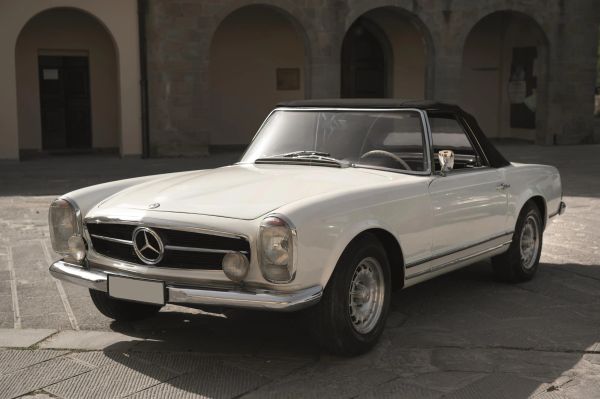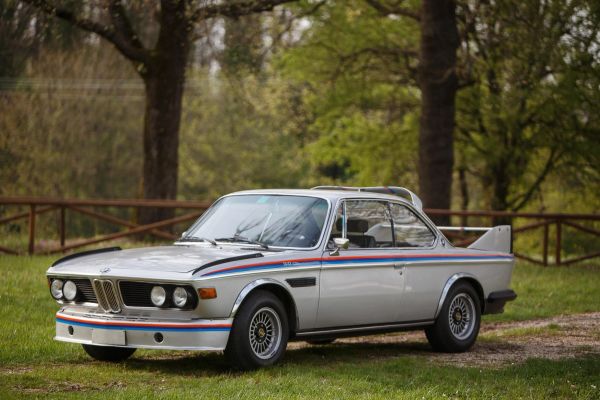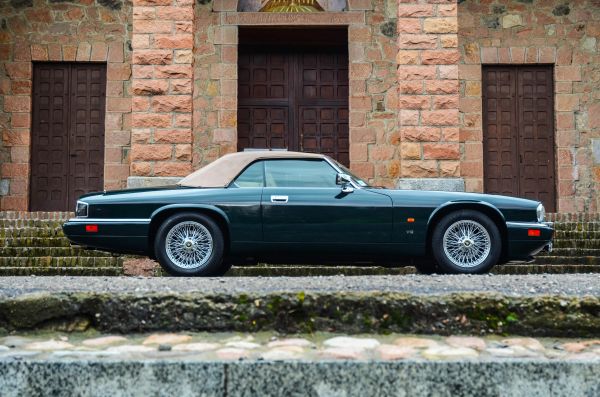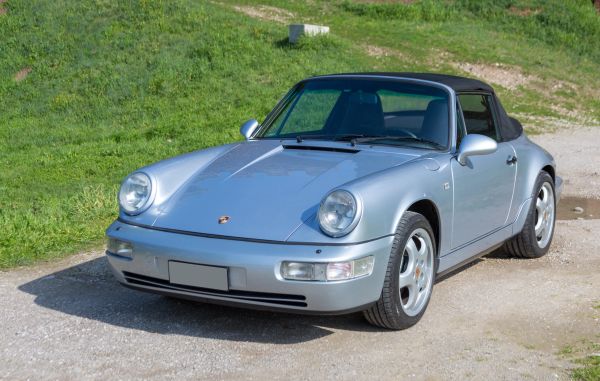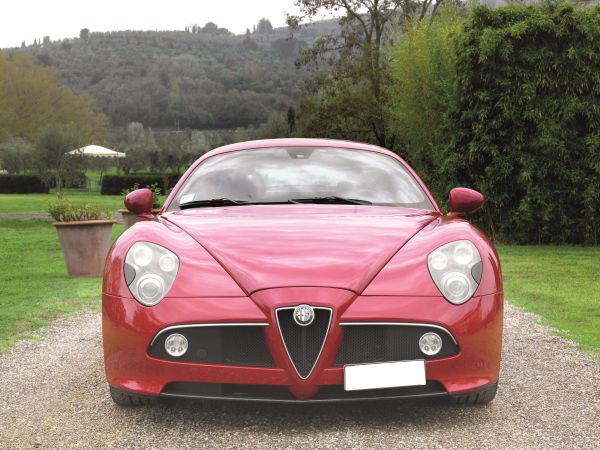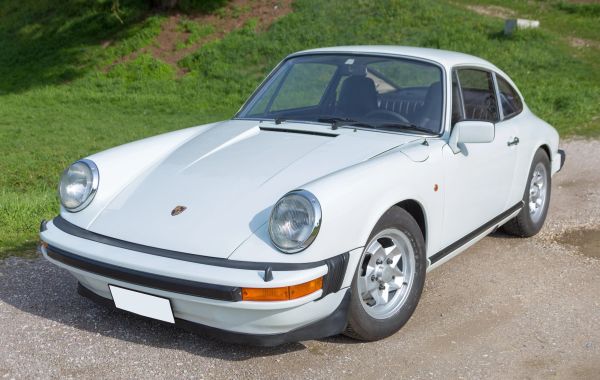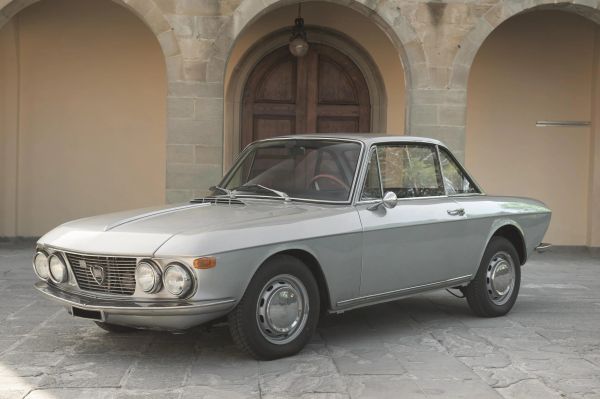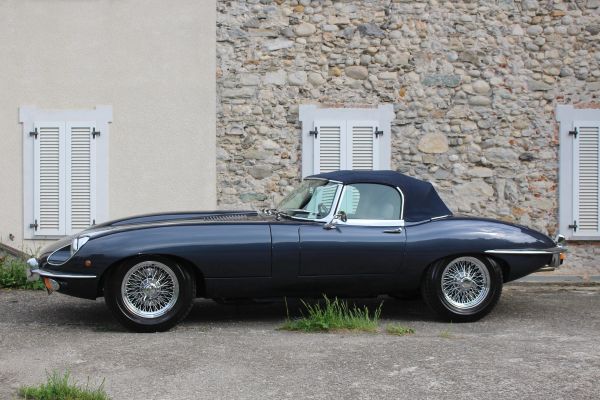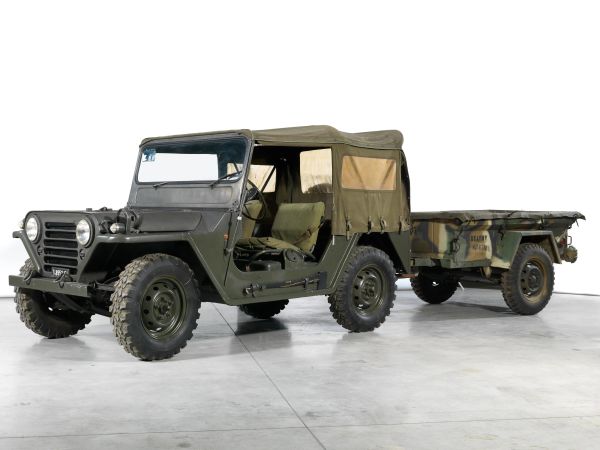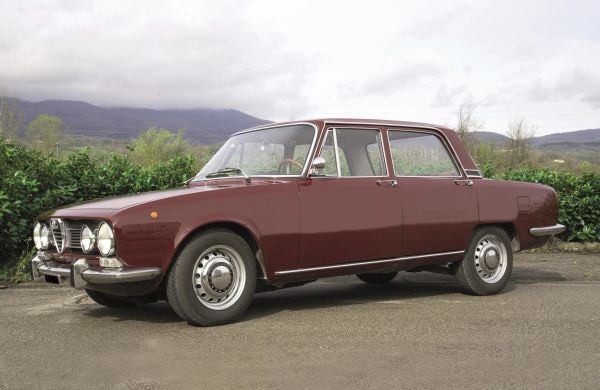1
AUTOBIANCHI BIANCHINA PANORAMICA (1962)
AUTOBIANCHI BIANCHINA PANORAMICA (1962)
CHASSIS N.: 126442
ENGINE: 2 CYLINDER
DISPLACEMENT: 500 CM3 [..]
1
Free Bid
AUTOBIANCHI BIANCHINA PANORAMICA (1962)
AUTOBIANCHI BIANCHINA PANORAMICA (1962)
CHASSIS N.: 126442
ENGINE: 2 CYLINDER
DISPLACEMENT: 500 CM3 [..]
Estimate
€ 4.000 / 6.000
Sold
2
FIAT 1100 FAMILIARE (1961)
FIAT 1100 FAMILIARE (1961)
PANORAMICA
CHASSIS N. 103H108-772510
ENGINE: IN LINE 4
DISPLACEMENT: [..]
2
Free Bid
FIAT 1100 FAMILIARE (1961)
FIAT 1100 FAMILIARE (1961)
PANORAMICA
CHASSIS N. 103H108-772510
ENGINE: IN LINE 4
DISPLACEMENT: [..]
Estimate
€ 12.000 / 15.000
3
DAIMLER SIX 4.0 PASSO LUNGO (1996)
DAIMLER SIX 4.0 LONG WHEELBASE (1996)
CHASSIS N. SAJDKAND4BJ768833
ENGINE: 6 CYLINDER
DISPLACEMENT: [..]
3
Free Bid
DAIMLER SIX 4.0 PASSO LUNGO (1996)
DAIMLER SIX 4.0 LONG WHEELBASE (1996)
CHASSIS N. SAJDKAND4BJ768833
ENGINE: 6 CYLINDER
DISPLACEMENT: [..]
Estimate
€ 6.000 / 8.000
Sold
4
FERRARI MONDIAL (1988)
FERRARI MONDIAL (1988)
CHASSIS N. ZFFWD21B000075832
ENGINE: 8 CYLINDER
DISPLACEMENT: 3200 CC [..]
4
Free Bid
FERRARI MONDIAL (1988)
FERRARI MONDIAL (1988)
CHASSIS N. ZFFWD21B000075832
ENGINE: 8 CYLINDER
DISPLACEMENT: 3200 CC [..]
Estimate
€ 30.000 / 40.000
Sold
5
PORSCHE 993 TURBO (1995)
PORSCHE 993 TURBO
CHASSIS: WPOZZZ99ZTS371219
ENGINE: 6 cylinder boxer twin turbo
DISPLACEMENT: [..]
5
Free Bid
PORSCHE 993 TURBO (1995)
PORSCHE 993 TURBO
CHASSIS: WPOZZZ99ZTS371219
ENGINE: 6 cylinder boxer twin turbo
DISPLACEMENT: [..]
Estimate
€ 100.000 / 130.000
6
LANCIA APRILIA CABRIOLET (1939)
LANCIA APRILIA CABRIOLET (1939)
CHASSIS N. 239-3750
ENGINE: NARROW VEE 4 CYLINDER
DISPLACEMENT: [..]
6
Free Bid
LANCIA APRILIA CABRIOLET (1939)
LANCIA APRILIA CABRIOLET (1939)
CHASSIS N. 239-3750
ENGINE: NARROW VEE 4 CYLINDER
DISPLACEMENT: [..]
Estimate
€ 150.000 / 200.000
7
MG TD (1953)
MG TD (1953)
CHASSIS N. A 6243248
ENGINE: IN LINE 4
DISPLACEMENT: 1250 CM3
POWER: 55 [..]
7
Free Bid
MG TD (1953)
MG TD (1953)
CHASSIS N. A 6243248
ENGINE: IN LINE 4
DISPLACEMENT: 1250 CM3
POWER: 55 [..]
Estimate
€ 28.000 / 35.000
8
FIAT 500 F (1968)
Fiat 500 F (1968)
CHASSIS N. 110F - 1745565
ENGINE: 2 CYLINDER
DISPLACEMENT: 499.5 CC
POWER: [..]
8
Free Bid
FIAT 500 F (1968)
Fiat 500 F (1968)
CHASSIS N. 110F - 1745565
ENGINE: 2 CYLINDER
DISPLACEMENT: 499.5 CC
POWER: [..]
Estimate
€ 6.000 / 8.000
Sold
9
LANCIA FULVIA COUPE’ 1.3HF (1968)
LANCIA FULVIA COUPE’ 1.3HF (1968)
CHASSIS N. 818.340*001354
ENGINE: V4
DISPLACEMENT: 1298 [..]
9
Free Bid
LANCIA FULVIA COUPE’ 1.3HF (1968)
LANCIA FULVIA COUPE’ 1.3HF (1968)
CHASSIS N. 818.340*001354
ENGINE: V4
DISPLACEMENT: 1298 [..]
Estimate
€ 56.000 / 65.000
10
MERCEDES BENZ 450 SEL 6.9 (1975)
MERCEDES BENZ 450 SEL 6.9 (1975)
CHASSIS N. 116036 12 000267
ENGINE : V8
DISPLACEMENT [..]
10
Free Bid
MERCEDES BENZ 450 SEL 6.9 (1975)
MERCEDES BENZ 450 SEL 6.9 (1975)
CHASSIS N. 116036 12 000267
ENGINE : V8
DISPLACEMENT [..]
Estimate
€ 20.000 / 25.000
Sold
11
FIAT 1800 B (1966)
FIAT 1800 B (1966)
CHASSIS N. 188636
ENGINE: IN LINE 6
DISPLACEMENT: 1795 CM3
POWER: 86 cv
[..]
11
Free Bid
FIAT 1800 B (1966)
FIAT 1800 B (1966)
CHASSIS N. 188636
ENGINE: IN LINE 6
DISPLACEMENT: 1795 CM3
POWER: 86 cv
[..]
Estimate
€ 6.000 / 10.000
12
ALFA ROMEO GIULIETTA SPRINT 3° SERIE (1962)
ALFA ROMEO GIULIETTA SPRINT 3RD SERIES (1962)
CHASSIS N. AR162239
ENGINE: 4 CYLINDER
DISPLACEMENT: [..]
12
Free Bid
ALFA ROMEO GIULIETTA SPRINT 3° SERIE (1962)
ALFA ROMEO GIULIETTA SPRINT 3RD SERIES (1962)
CHASSIS N. AR162239
ENGINE: 4 CYLINDER
DISPLACEMENT: [..]
Estimate
€ 55.000 / 65.000
13
SIATA 1500 (1962)
SIATA 1500 (1962)
CHASSIS N. 0108103
ENGINE: 4 CYLINDER
DISPLACEMENT: 1481 CM3
POWER: 94 [..]
13
Free Bid
SIATA 1500 (1962)
SIATA 1500 (1962)
CHASSIS N. 0108103
ENGINE: 4 CYLINDER
DISPLACEMENT: 1481 CM3
POWER: 94 [..]
Estimate
€ 20.000 / 30.000
Sold
14
JAGUAR XK 140 DHC (1955)
JAGUAR XK 140 DHC (1955)
CHASSIS N. S817705
ENGINE: IN-LINE 6 CYLINDER, TWIN-CAM
DISPLACEMENT: [..]
14
Free Bid
JAGUAR XK 140 DHC (1955)
JAGUAR XK 140 DHC (1955)
CHASSIS N. S817705
ENGINE: IN-LINE 6 CYLINDER, TWIN-CAM
DISPLACEMENT: [..]
Estimate
€ 85.000 / 120.000
15
JAGUAR Mk IX (1961)
JAGUAR Mk IX (1961)
CHASSIS N. 793639BW
ENGINE: 6 CYLINDER
DISPLACEMENT: 3800 CM3
POWER: [..]
15
Free Bid
JAGUAR Mk IX (1961)
JAGUAR Mk IX (1961)
CHASSIS N. 793639BW
ENGINE: 6 CYLINDER
DISPLACEMENT: 3800 CM3
POWER: [..]
Estimate
€ 35.000 / 55.000
16
SAAB 96 (1964)
SAAB 96 DE LUXE (1964)
CHASSIS N. 227020
ENGINE: 3 CYLINDER, 2 STROKE
DISPLACEMENT: 841 CC
[..]
16
Free Bid
SAAB 96 (1964)
SAAB 96 DE LUXE (1964)
CHASSIS N. 227020
ENGINE: 3 CYLINDER, 2 STROKE
DISPLACEMENT: 841 CC
[..]
Estimate
€ 8.000 / 12.000
Sold
17
TRIUMPH TR4A (1965)
TRIUMPH TR4A IRS (1965)
CHASSIS N. CTC/51546-LO
ENGINE: 4 CYLINDER
DISPLACEMENT: 2138 [..]
17
Free Bid
TRIUMPH TR4A (1965)
TRIUMPH TR4A IRS (1965)
CHASSIS N. CTC/51546-LO
ENGINE: 4 CYLINDER
DISPLACEMENT: 2138 [..]
Estimate
€ 35.000 / 55.000
18
FIAT 1100 TV Pinin Farina (1955)
FIAT 1100 TV Pinin Farina (1955)
CHASSIS N. 168695
ENGINE: 4 CILINDRI
DISPLACEMENT: 1089 [..]
18
Free Bid
FIAT 1100 TV Pinin Farina (1955)
FIAT 1100 TV Pinin Farina (1955)
CHASSIS N. 168695
ENGINE: 4 CILINDRI
DISPLACEMENT: 1089 [..]
Estimate
€ 150.000 / 200.000
19
BENTLEY T II (1979)
BENTLEY T II (1979)
CHASSIS N. SBH37023
ENGINE: V8
DISPLACEMENT: 6750 CM3
POWER: ADEQUATE [..]
19
Free Bid
BENTLEY T II (1979)
BENTLEY T II (1979)
CHASSIS N. SBH37023
ENGINE: V8
DISPLACEMENT: 6750 CM3
POWER: ADEQUATE [..]
Estimate
€ 18.000 / 22.000
Sold
20
MERCEDES BENZ 230 SL (1965)
MERCEDES BENZ 230 SL (1965)
CHASSIS N. 11304-2-10-00606
ENGINE: IN LINE 6
DISPLACEMENT: 2306 [..]
20
Free Bid
MERCEDES BENZ 230 SL (1965)
MERCEDES BENZ 230 SL (1965)
CHASSIS N. 11304-2-10-00606
ENGINE: IN LINE 6
DISPLACEMENT: 2306 [..]
Estimate
€ 50.000 / 70.000
21
BMW 3.0 CSL ‘BATMOBILE’ (1973)
BMW 3.0 CSL ‘BATMOBILE’ (1973)
CHASSIS N. 2275484
ENGINE: 6 CYLINDER
DISPLACEMENT: 3.153 [..]
21
Free Bid
BMW 3.0 CSL ‘BATMOBILE’ (1973)
BMW 3.0 CSL ‘BATMOBILE’ (1973)
CHASSIS N. 2275484
ENGINE: 6 CYLINDER
DISPLACEMENT: 3.153 [..]
Estimate
€ 250.000 / 350.000
22
BMW 327/28 (1938)
BMW 327/28 (1938)
CHASSIS N. 74301
ENGINE: INLINE SIX, TYPE 328
DISPLACEMENT: 1970 CM3
POWER: [..]
22
Free Bid
BMW 327/28 (1938)
BMW 327/28 (1938)
CHASSIS N. 74301
ENGINE: INLINE SIX, TYPE 328
DISPLACEMENT: 1970 CM3
POWER: [..]
Estimate
€ 200.000 / 250.000
Sold
23
JAGUAR XJS 6.0 CABRIOLET (1994)
Jaguar XJS 6.0 Cabriolet (1994)
CHASSIS N. SAJJNAFS4ER195337
ENGINE: 12 CYLINDER
DISPLACEMENT: [..]
23
Free Bid
JAGUAR XJS 6.0 CABRIOLET (1994)
Jaguar XJS 6.0 Cabriolet (1994)
CHASSIS N. SAJJNAFS4ER195337
ENGINE: 12 CYLINDER
DISPLACEMENT: [..]
Estimate
€ 30.000 / 35.000
Sold
24
PORSCHE 911 964 CARRERA 4 CABRIO (1992)
PORSCHE 911 964 CARRERA 4 CABRIO (1992)
CHASSIS N. WPOZZZ96ZMS452888 [..]
24
Free Bid
PORSCHE 911 964 CARRERA 4 CABRIO (1992)
PORSCHE 911 964 CARRERA 4 CABRIO (1992)
CHASSIS N. WPOZZZ96ZMS452888 [..]
Estimate
€ 60.000 / 80.000
25
ALFA ROMEO 8C COMPETIZIONE (2008)
ALFA ROMEO 8C COMPETIZIONE (2008)
CHASSIS N. 035542
ENGINE: V8 Ferrari-Maserati
DISPLACEMENT: [..]
25
Free Bid
ALFA ROMEO 8C COMPETIZIONE (2008)
ALFA ROMEO 8C COMPETIZIONE (2008)
CHASSIS N. 035542
ENGINE: V8 Ferrari-Maserati
DISPLACEMENT: [..]
Estimate
€ 180.000 / 220.000
26
PORSCHE 911 S 2.7 (1974)
PORSCHE 911 S 2.7 (1974)
CHASSIS N. 9114300985
ENGINE: SIX CYLINDER BOXER
DISPLACEMENT: 2687 cm³ [..]
26
Free Bid
PORSCHE 911 S 2.7 (1974)
PORSCHE 911 S 2.7 (1974)
CHASSIS N. 9114300985
ENGINE: SIX CYLINDER BOXER
DISPLACEMENT: 2687 cm³ [..]
Estimate
€ 70.000 / 100.000
27
LANCIA FULVIA COUPE’ 1.3S RALLYE (1970)
LANCIA FULVIA COUPE’ 1.3S RALLYE (1970)
CHASSIS N. 818.360*009398
ENGINE: NARROW ANGLE V4 [..]
27
Free Bid
LANCIA FULVIA COUPE’ 1.3S RALLYE (1970)
LANCIA FULVIA COUPE’ 1.3S RALLYE (1970)
CHASSIS N. 818.360*009398
ENGINE: NARROW ANGLE V4 [..]
Estimate
€ 25.000 / 35.000
28
JAGUAR E TYPE 4.2 2° SERIE OTS (1969)
JAGUAR E TYPE 4.2 2° SERIE OTS (1969)
CHASSIS N. 1R12270
ENGINE: 6 CYLINDER
DISPLACEMENT: [..]
28
Free Bid
JAGUAR E TYPE 4.2 2° SERIE OTS (1969)
JAGUAR E TYPE 4.2 2° SERIE OTS (1969)
CHASSIS N. 1R12270
ENGINE: 6 CYLINDER
DISPLACEMENT: [..]
Estimate
€ 120.000 / 140.000
29
FORD M151 “MUTT” (1964)
FORD M151 “MUTT” (1960)
CHASSIS N. 78691
ENGINE: 4 CYLINDER
DISPLACEMENT: 2300 CM3 [..]
29
Free Bid
FORD M151 “MUTT” (1964)
FORD M151 “MUTT” (1960)
CHASSIS N. 78691
ENGINE: 4 CYLINDER
DISPLACEMENT: 2300 CM3 [..]
Estimate
€ 15.000 / 20.000
30
ALFA ROMEO 1750 (1970)
ALFA ROMEO 1750 (1970)
CHASSIS N. AR*1755229
ENGINE: 4 CYLINDER
DISPLACEMENT: 1779 CM3
POWER: [..]
30
Free Bid
ALFA ROMEO 1750 (1970)
ALFA ROMEO 1750 (1970)
CHASSIS N. AR*1755229
ENGINE: 4 CYLINDER
DISPLACEMENT: 1779 CM3
POWER: [..]
Estimate
€ 10.000 / 15.000
Sold



